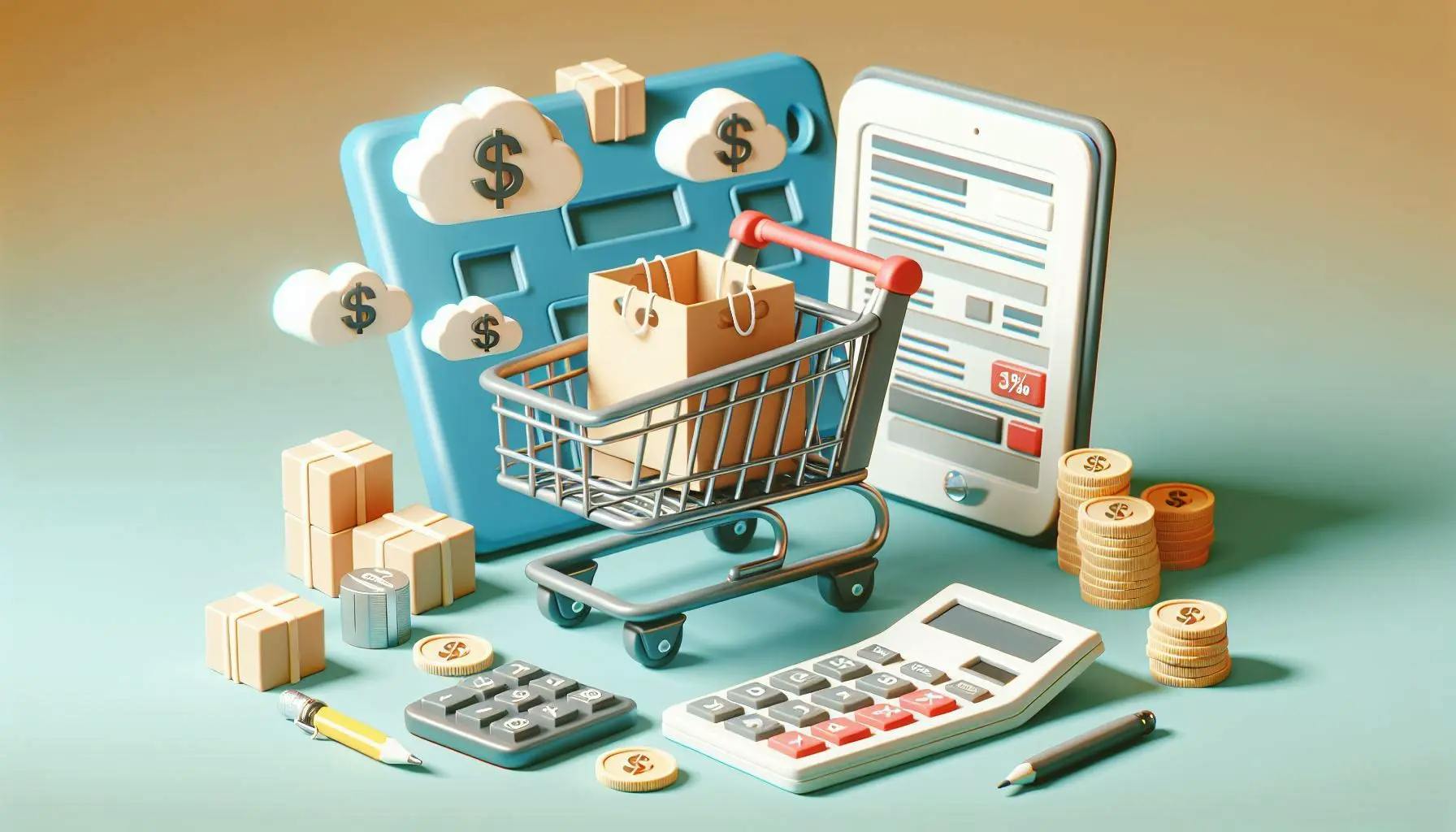
The Cash Flow Rollercoaster: Navigating Peaks and Valleys in Ecommerce
Running an ecommerce business can feel like riding a rollercoaster, with cash flow highs and lows that can leave you feeling exhilarated one moment and anxious the next. Just like a rollercoaster, the key to surviving and thriving in the ecommerce world is to be prepared for the ups and downs and have a plan in place to navigate them.

Understanding the Ecommerce Cash Flow Cycle
The ecommerce cash flow cycle is the time it takes from when you spend money on inventory to when you receive payment from your customers. This cycle can vary greatly depending on your business model, products, and payment terms with suppliers and customers.
The Peaks: When Cash Flow is High
The peaks of the ecommerce cash flow rollercoaster occur when you have a surge in sales, such as during the holiday season or a successful product launch. During these times, your cash flow is high, and you may feel like you're on top of the world.
However, it's important to remember that these peaks are temporary and that you need to plan for the inevitable valleys that will follow. This means setting aside a portion of your profits to reinvest in your business, pay off debt, or build up your cash reserves.
The Valleys: When Cash Flow is Low
The valleys of the ecommerce cash flow rollercoaster occur when sales are slow, or you have a lot of expenses to pay, such as inventory or marketing costs. During these times, your cash flow may be negative, and you may feel like you're struggling to keep your head above water.
It's important to have a plan in place to navigate these valleys, such as reducing expenses, negotiating better payment terms with suppliers, or finding alternative sources of funding, such as a line of credit or investor financing.
Strategies for Navigating the Cash Flow Rollercoaster
1. Forecast Your Cash Flow
One of the most important strategies for navigating the ecommerce cash flow rollercoaster is to forecast your cash flow. This means creating a financial plan that takes into account your expected revenue and expenses over a specific period, such as a month or a quarter.
By forecasting your cash flow, you can identify potential cash flow gaps and take steps to address them before they become a problem. For example, if you know that you have a large inventory purchase coming up, you can plan to set aside funds to cover that expense or negotiate better payment terms with your supplier.
2. Manage Your Inventory Carefully
Another key strategy for navigating the ecommerce cash flow rollercoaster is to manage your inventory carefully. This means avoiding overstocking, which can tie up your cash in unsold products, and understocking, which can lead to lost sales and unhappy customers.
One way to manage your inventory is to use inventory management software that can help you track your inventory levels in real-time and alert you when it's time to reorder. You can also use data analytics to identify which products are selling well and which ones are not, so you can adjust your inventory accordingly.
3. Diversify Your Revenue Streams
Diversifying your revenue streams is another strategy for navigating the ecommerce cash flow rollercoaster. This means finding ways to generate income beyond just selling products, such as offering subscription services, selling digital products, or partnering with other businesses for affiliate marketing.
By diversifying your revenue streams, you can create a more stable and predictable cash flow that is less dependent on the ups and downs of product sales. For example, if you offer a subscription service for your products, you can count on a certain amount of recurring revenue each month, even if your product sales are slow.
4. Build Strong Relationships with Suppliers and Customers
Building strong relationships with your suppliers and customers is another important strategy for navigating the ecommerce cash flow rollercoaster. This means communicating openly and honestly with your suppliers about your cash flow needs and negotiating favorable payment terms whenever possible.
It also means providing excellent customer service and building a loyal customer base that will continue to support your business even during slow periods. By building strong relationships with your suppliers and customers, you can create a more resilient and sustainable business that can weather the ups and downs of the ecommerce world.
5. Have a Backup Plan
Finally, it's important to have a backup plan in place for when the ecommerce cash flow rollercoaster takes an unexpected dip. This means having an emergency fund or line of credit that you can tap into when needed, as well as having a plan for cutting expenses or generating additional revenue quickly.
For example, if you find yourself in a cash flow crunch, you may need to temporarily reduce your marketing spending or offer a flash sale to generate quick cash. By having a backup plan in place, you can avoid panic and make smart decisions that will help you navigate the cash flow rollercoaster with confidence.
Real-World Examples
To illustrate these strategies in action, let's take a look at a few real-world examples:
- Example 1: Sarah runs an ecommerce store that sells handmade jewelry. She used to struggle with cash flow during slow periods until she started forecasting her cash flow and setting aside a portion of her profits during peak periods to cover her expenses during the valleys. She also diversified her revenue streams by offering jewelry-making classes and partnering with other artisans for cross-promotions.
- Example 2: Mark owns an ecommerce store that sells outdoor gear. He used to overstock his inventory, which tied up his cash and left him struggling to pay his bills. He now uses inventory management software to track his inventory levels in real-time and has negotiated better payment terms with his suppliers. He also has a line of credit that he can tap into when needed to cover unexpected expenses.
- Example 3: Lisa runs an ecommerce store that sells organic beauty products. She used to struggle with inconsistent cash flow until she started offering a subscription service for her products. Now, she has a predictable stream of recurring revenue each month, which has helped her smooth out the ups and downs of her cash flow cycle. She also builds strong relationships with her customers by offering excellent customer service and personalized recommendations.
Conclusion
Navigating the ecommerce cash flow rollercoaster can be a wild ride, but with the right strategies in place, it's possible to not only survive but thrive. By forecasting your cash flow, managing your inventory carefully, diversifying your revenue streams, building strong relationships with suppliers and customers, and having a backup plan in place, you can create a more resilient and sustainable ecommerce business that can weather any storm.
Remember, just like riding a rollercoaster, the key is to stay focused, stay calm, and trust in your plan. With a little preparation and a lot of determination, you can navigate the ups and downs of the ecommerce world with confidence and come out on top.

